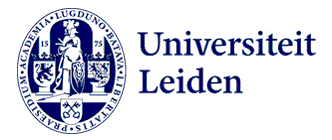Isolasi dan identifikasi Escherichia coli dari Sumber Air Minum Kandang Broiler serta Uji Aktivitas Antibakteri Lidah Buaya
Isolation and Identification Escherichia coli form Broiler Farm Water Source and Aloe Vera Antibacterial Activity Test
DOI:
https://doi.org/10.46549/jipvet.v10i2.116Keywords:
Aloe vera, Escherichia coli, Inhibitory activity, Broiler drinking water, Air minum broiler, Lidah buaya, Daya hambat bakteriAbstract
Abstract
Colibacillosis is one of the most problematic issues in the boiler industry. However, the antibiotic overuse has induced Escherichia coli resistance so that other alternative to reduce colibacillosis is needed. One of the alternatives is using aloe vera (Aloe barbadensis Miller), which has been widely used as an antibacterial agent. This study aims to isolate and identify E. coli from the broiler drinking water source and test the aloe vera antibacterial activity against it. Escherichia coli were isolated from well in three broiler farms in Moyudan District, Sleman, Yogyakarta that previously had colibacillosis. Escherichia coli were isolated using eosin methylene blue (EMB) agar and the metallic sheen colony was tested to confirm the biochemist reaction. The pure isolate of E. coli was used in the aloe vera inhibition test using Muller Hinton agar (MHA) by a Well Diffusion method. Aloe vera was processed using aquades and ethanol 70%. The aquades infusion was diluted into 12.5%, 25%, 50%, 75%, and 100% and the extract ethanol 70% was diluted into 10%, 12.5, %, 25%, 40%, and 50%. The bacterial identification showed that one of three samples contained E. coli which was then used for inhibition test. The result showed no inhibition zone in the aquades infusion while ethanol extract showed an inhibition zone in concentration 25%, 40%, and 50% of aloe vera extract with a diameter 19.5 mm, 24 mm, and 25 mm. It can be concluded that aloe vera ethanol extract has inhibitory activity against E. coli in poultry drinking water with a minimum concentration of 25%.
Keywords: Aloe vera; Broiler drinking water; Escherichia coli; Inhibitory activity
Abstrak
Colibacilosis masih menjadi permasalahan dalam industri broiler. Penggunaan antibiotik berlebihan telah menyebabkan resistensi sehingga perlu alternatif lain. Salah satu alternatif adalah menggunakan bahan alami seperti adalah lidah buaya (Aloe barbadensis Miller) yang memilliki aktivitas antibakteri. Penelitian ini bertujuan untuk mengisolasi dan mengidentifikasi E. coli dari sumber air minum di kandang broiler serta menguji aktivitas inhibisi lidah buaya terhadap bakteri tersebut. Air yang digunakan sebagai sumber E. coli berasal dari sumur di tiga peternakan broiler di Kecamatan Moyudan, Sleman, Yogyakarta yang memiliki riwayat infeksi colibacilosis. Bakteri E. coli diisolasi menggunakan media eosin methylene blue (EMB) dan diuji sifat biokimia untuk mengkonfirmasi sifat bakteri E. coli. Isolat murni E. coli digunakan pada uji daya hambat bakteri dengan metode difusi sumuran menggunakan media Muller Hinton Agar (MHA). Lidah buaya diproses menggunakan aquades dan ethanol 70%. Infusa aquades diencerkan menjadi konsentrasi 12,5%, 25%, 50%, 75%, dan 100% dan ekstrak ethanol 70% diencerkan menjadi 10%, 12., %, 25%, 40%, dan 50%. Hasil isolasi menunjukan bahwa satu sumber air dari sumur di Desa Kolowenang mengandung E. coli yang kemudian digunakan pada pengujian daya hambat. Hasil pengujian menunjukan tidak ada daya hambat yang terbentuk pada infusa aquades sedangkan ekstrak etanol lidah buaya 25%, 40%, dan 50% menunjukan adanya zona hambat sebesar 19,5 mm, 24 mm, dan 25 mm berturut-turut. Ekstrak etanol lidah buaya pada penelitian ini memiliki kemampuan menghambat pertumbuhan E. coli yang bersumber dari air minum broiler dengan konsentrasi terendah 25%.
Kata kunci: Air minum broiler; Escherichia coli; Lidah buaya; Daya hambat bakteri
Downloads
References
Arshad R., Farooq S., and Ali S. S. 2006. Manipulation of different media and methods for cost-effective characterization of Escherichia coli strains collected from different habitats. Pakistan Journal of Botany, 38(3):779.
Aswarita R. 2013. Interaksi ekstrak daun lidah buaya (Aloe vera L.) dan daun jambu biji (Psidium guajava L.) terhadap daya hambat Escherichia coli secara in vitro. Jurnal Edubio Tropika. 1(2):115-120.
Besung I. N. K., Putra I. P. Y. P. dan Suarjana I. G. K. 2017. Total Bakteri pada Air minum di Peternakan Ayam Pedaging Desa Mengesta Kecamatan Penebel Kabupaten Tabanan. Buletin Veteriner Udayana. 1(2):145-149.
Freeman B. C. dan Beattie G. A. 2008. An overview of plant defenses against pathogens and herbivores. The Plant Health Instructor. DOI: 10.1094/PHI-I-2008-0226-01.
Furtula V., Farrell E., Diarrassouba F., Rempel H., Pritchard J. dan Diarra M. 2010. Veterinary pharmaceuticals and antibiotic resistance of Escherichia coli isolates in poultry litter from commercial farms and controlled feeding trials. Poultry Science 89:180-8. DOI: 10.3382/ps.2009-00198.
Hansen A. K. dan Nielsen D. S. 2014. Handbook of Laboratory Animal Bacteriology. Boa Raton: CRC Press.
Igbinosa O., Igbinosa E. dan Aiyegoro O. 2009. Antimicrobial activity and phytochemical screening of stem bark extracts from Jatropha curcas (Linn). African journal of pharmacy and pharmacology 3(2):58-62.
Leininger D. J., Roberson J. R., Elvinger F. 2001. Use of eosin methylene blue agar to differentiate Escherichia coli from other gram-negative mastitis pathogens. Journal of veterinary diagnostic investigation, 13(3):273-275.
Lusandika E. H., Suarjana I. G. K. dan Suada I. K. 2017. Kualitas air peternakan ayam broiler ditinjau dari jumlah bakteri coliform dan Escherichia coli. Buletin Veteriner Udayana 9(1):81-86. DOI: 10.21531/bulvet.2017.9.1.81.
Mulyanita M. 2019. Total fenol, flavonoid dan aktivitas antimikroba ekstrak limbah kulit lidah buaya (Aloe chinensis Baker). Jurnal Vokasi Kesehatan 5:95-102.
Niasono A. B., Latif H. dan Purnawarman T. 2019. Resistensi antibiotik terhadap bakteri Escherichia coli yang diisolasi dari peternakan ayam pedaging di Kabupaten Subang Jawa Barat. Jurnal Veteriner, 20(2):187-195. DOI: 10.19087/jveteriner.2019.20.2.187.
Rahardjo M., Koendhori E. B. dan Setiawati Y. 2017. Uji aktivitas antibakteri ekstrak etanol lidah buaya (Aloe vera) terhadap bakteri Staphylococcus aureus. Jurnal Kedokteran Syiah Kuala 17(2):65-70. DOI: 10.24815/jks.v17i2.8975.
Rahayu I. 2006. Aloe barbadensis Miller and Aloe chinensis Baker as antibiotic in medication of poultry etnoveteriner by in vitro. Journal of Protein. 13(1):31-34.
Suarjana I. G. K. 2009. Kualitas air minum ternak ayam petelur di Desa Piling Kecamatan Penebel Kabupaten Tabanan ditinjau dari jumlah bakteri coliform. Buletin Veteriner Udayana. 1(2): 55-60.
Sulistyani N., Kurniati E. dan Cempaka R. A. 2016. Antibacterial activity of aloe vera leaf infuse (Aloe barbadensis Miller). Jurnal Penelitian Saintek. 21(2): 120-128. DOI: 10.21831/jps.v21i2.13942.
Suryati N., Bahar E. dan Ilmiawati I. 2018. Uji Efektivitas antibakteri ekstrak aloe vera terhadap pertumbuhan Escherichia coli secara in vitro. Jurnal kesehatan Andalas. 6(3): 518-522. DOI: 10.25077/jka.v6i3.732.
Utami E. R. 2012. Antibiotika, resistensi, dan rasionalitas terapi. Sainstis. 1(1):124-138. DOI:10.18860/sains.v0i0.1861
Valgas C., Souza S. M., Smânia E. F., dan Smânia A. 2007. Screening methods to determine antibacterial activity of natural products. Brazilian journal of microbiology. 38(2): 369-380. DOI:10.1590/S1517-83822007000200034.
Wahyuwardan S., Noor S., Poeloengan M. dan Aryanti T. 2014. Kasus kolibasilosis pada peternakan ayam pedaging di Yogyakarta dan Bogor. Prosiding Seminar Nasional Teknologi Peternakan dan Veteriner. DOI: 10.14334/Pros.Semnas.TPV-2014-p.606-610.
Wibisono F. J., Sumiarto B., Untari T., Effendi M. H., Permatasari D. A. dan Witaningrum A. M. 2020. Prevalensi dan analisis faktor risiko multidrug resistance bakteri Escherichia coli pada ayam komersial di Kabupaten Blitar. Jurnal Ilmu Peternakan dan Veteriner Tropis. 10(1):15-22. DOI: 10.46549/jipvet.v10i1.74.
Widyastuti Y., Yuliani N., Widhyastini I. M. 2019. Aktivitas antibakteri infusa daun lidah buaya (Aloe vera l) terhadap pertumbuhan Staphylococcus aureus dan Escherichia coli. Jurnal Sains Natural. 6(1):33-43. DOI:10.31938/jsn.v6i1.253.
Wiedosari E. dan Wahyuwardani S. 2015. Studi kasus penyakit ayam pedaging di Kabupaten Sukabumi dan Bogor. Jurnal Kedokteran Hewan-Indonesian Journal of Veterinary Sciences. 9(1): 9-13. DOI: 10.21157/j.ked.hewan.v9i1.2777.
Yebpella G., Adeyemi H. M., Hammuel C., Magomya A., Agbaji A. dan Okonkwo E. 2011. Phtyochemical screening and comparative study of antimicrobial activity of Aloe vera various extracts. African Journal of Microbiology Research. 5(10): 1182-1187. DOI: 10.5897/AJMR10.818.
Zeb A. 2012. Effect of water based infusion of Aloe barbedensis, Pimpinella anisum, Berberis lycium, Trigonella foenum-graecum and Allium sativum on the performance of broiler chicks. Pakistan Veterinary Journal. 32(4): 539-596.
Downloads
Published
How to Cite
Issue
Section
License
License and Copyright Agreement
In submitting the manuscript to the journal, the authors certify that:
- They are authorized by their co-authors to enter into these arrangements.
- The work described has not been formally published before, except in the form of an abstract or as part of a published lecture, review, thesis, or overlay journal. Please also carefully read Jurnal Ilmu Peternakan dan Veteriner Tropis (Journal of Tropical Animal and Veterinary Science) Posting Your Article Policy at https://journal.fapetunipa.ac.id/index.php/JIPVET/publicationethics
- That it is not under consideration for publication elsewhere,
- That its publication has been approved by all the author(s) and by the responsible authorities “tacitly or explicitly“ of the institutes where the work has been carried out.
- They secure the right to reproduce any material that has already been published or copyrighted elsewhere.
- They agree to the following license and copyright agreement.
Copyright
Authors who publish with Jurnal Ilmu Peternakan dan Veteriner Tropis (Journal of Tropical Animal and Veterinary Science) agree to the following terms:
- Authors retain copyright and grant the journal right of first publication with the work simultaneously licensed under a Creative Commons Attribution License (CC BY-NC-SA 4.0) that allows others to share the work with an acknowledgment of the work's authorship and initial publication in this journal.
- Authors are able to enter into separate, additional contractual arrangements for the non-exclusive distribution of the journal's published version of the work (e.g., post it to an institutional repository or publish it in a book), with an acknowledgment of its initial publication in this journal.
- Authors are permitted and encouraged to post their work online (e.g., in institutional repositories or on their website) prior to and during the submission process, as it can lead to productive exchanges, as well as earlier and greater citation of published work.

This work is licensed under a Creative Commons Attribution-NonCommercial-ShareAlike 4.0 International License.

























.png)
